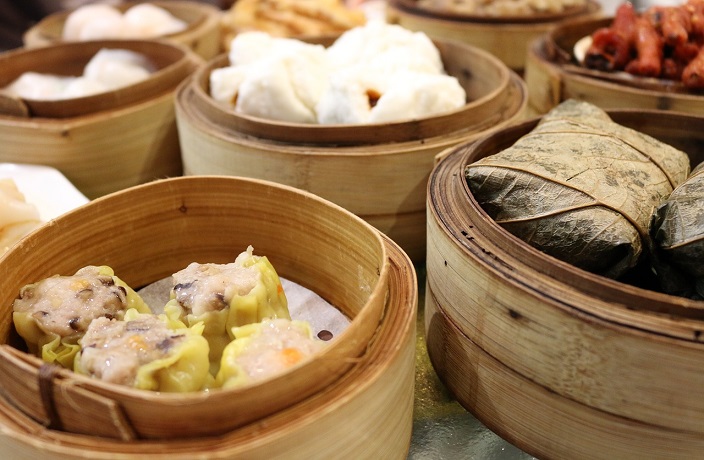It doesn't matter where you travel in China, xiaochi (or street snacks) are an essential part of the local diet. It may look like a humble bowl of steaming noodles or a baked piece of flatbread, but xiaochi are easygoing food that can be devoured at any time of the day or night.
With countless regional variants, it might seem impossible to understand the intricacies of xiaochi. But, fear not, for we're here to provide you with a quick primer on what to eat and where to find it in Shanghai.
Guoqiao Mixian ('Crossing-the-Bridge' Noodles)
Cuisine: Yunnan Province

As the cold wind blows our way, there can be few heartier dishes than these slurp-worthy rice noodles. Traditionally prepared with simmering chicken broth in a stoneware bowl, the rice noodles and its various condiments including mushrooms and greens are assembled and cooked in front of guests.
There are two versions of a similar tale explaining this particular cooking method and the name of the dish. Both stories feature a devout wife who crossed a country bridge every day to deliver these noodles to her husband (who was either studying for the imperial exam or imprisoned on a desolate island), so he could enjoy a fresh hot meal. Today, these rice noodles is a staple among the Achang, Miao and Dai ethnic groups in China's Yunnan province. By late 2017, these delicious strands have conquered the hearts of New Yorkers, and are looking to take off across the Atlantic in no time.
Find them at…
> Yunnan Flavors 'Crossing the Bridge' Noodles (滇味园云南过桥米线) Multiple venues across town.
> Southern Barbarian (南蛮子) 2/F, 169 Jinxian Lu, by Maoming Nan Lu 进贤路169号56食尚谷E区2楼, 近茂名南路
Lanzhou Lamian (Hand-Pulled Lanzhou Noodles)
Cuisine: Hui Muslim
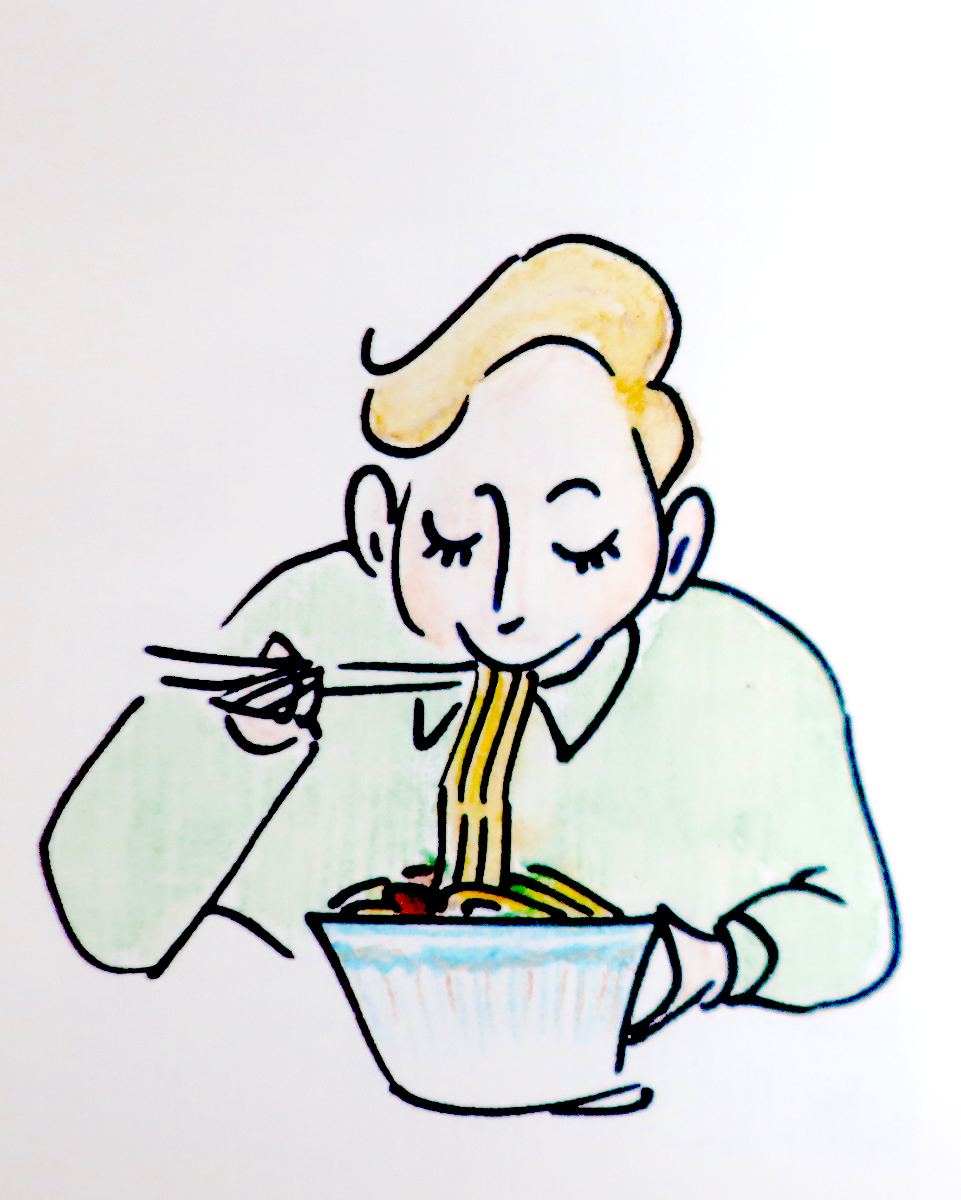
To rejuvenate the blood cells, try Lanzhou lamian. The verb 'la' (拉) literally means to pull or stretch, and these strictly hand-pulled noodles are normally served in a clear broth with tender beef and turnip slices – and sometimes an additional spoonful of spiced chili and peppercorn.
A seasoned chef is known for making nine types of lamian which vary in shape and form to accommodate a range of preferences. The secret ingredient which makes these noodles extra elastic and malleable is a succulent plant called halogeton, commonly found in the desert, a geographical feature that characterizes the province of Gansu where Lanzhou is located. With slow-boiled chicken or beef broth infused with multiple spices, a bowl of Lanzhou lamian is, without a doubt, the ideal winter warmer.
Find them at…
> Authentic Lanzhou Lamian Noodles (正宗兰州拉面) Multiple venues across town
> Sanjiangyuan Beef Lamian (三江源牛肉拉面) 577 Pudong Nan Lu, by Century Avenue 浦东南路577号, 近世纪大道
Xiaomian Kaolaolao (Steamed Buckwheat Noodles)
Cuisine: Shanxi Province

Xiaomian kaolaolao is not your usual strands-in-a-bowl sort of noodles. Visualize it as an equivalent of the Italian tubetti made of buckwheat flour, placed side to side neatly in a honeycomb structure. To eat, pick up the noodle tubes one at a time, and dip into an accompanying chili or zajiang (minced pork with soy) sauce.
Most provinces north of the Yellow River have a penchant for noodles, but Shanxi has gone one step further as the self-claimed 'home of world wheaten food.' There are scissored noodles, fish-shape noodles and a firm regional favorite – knife-shaved noodles. Should you find yourself in Shanxi, the night markets at the provincial capital Taiyuan and the ancient city of Pingyao are both renowned for dishing up hypnotizing varieties of noodles.
Find them at…
> Lao An Jia (老安家) 1925 Zhongshan Bei Lu, by Zhenping Lu 中山北路1925号, 近镇坪路
> Xibei (西贝莜面村) Multiple venues across town
Guabao (Open Steamed Bun Sandwich)
Cuisine: Hokkien
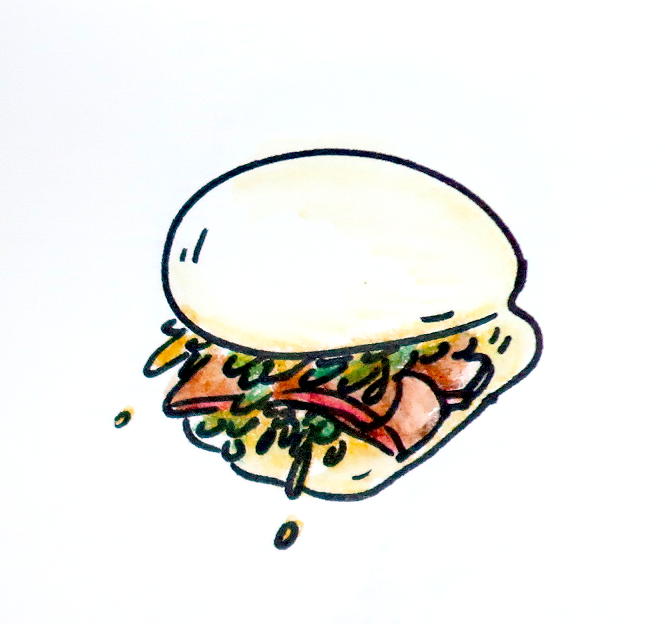
Backtrack to some ten years ago, guabao was the definition of hipster food in New York and London. These 'cut buns' are generously stuffed with tender pork, finely sliced pickled mustard greens, coriander and crushed peanuts with a sprinkle of sugar – in other words, an impeccable flavor profile and texture.
Guabao is known for its connection with the island of Taiwan and further influenced by Japanese hirata buns, while its origin can still be found among the Hokkien community in southern Fujian. The locals associate its appearance with 'tiger bites onto the pig' ('虎咬猪' , pronounced 'hǔ yǎo zhū'), which sounds uncannily similar to the expression, 'the capturing of fortune' ('福咬住', 'fú yǎo zhù'). Within some traditional households, guabao is still savored every year on New Year's Eve for its auspicious meaning.
Find them at…
> Tiger Bites 108 Xiangyang Bei Lu, by Huaihai Zhong Lu 襄阳北路108号, 近淮海中路
> Hakkasan 5/F, 18 Zhongshan Dong Yi Lu, by Nanjing Dong Lu 中山东一路18号5楼, 近南京东路
Samsa (Uyghur-style Parcels with Mutton)
Cuisine: Uyghur
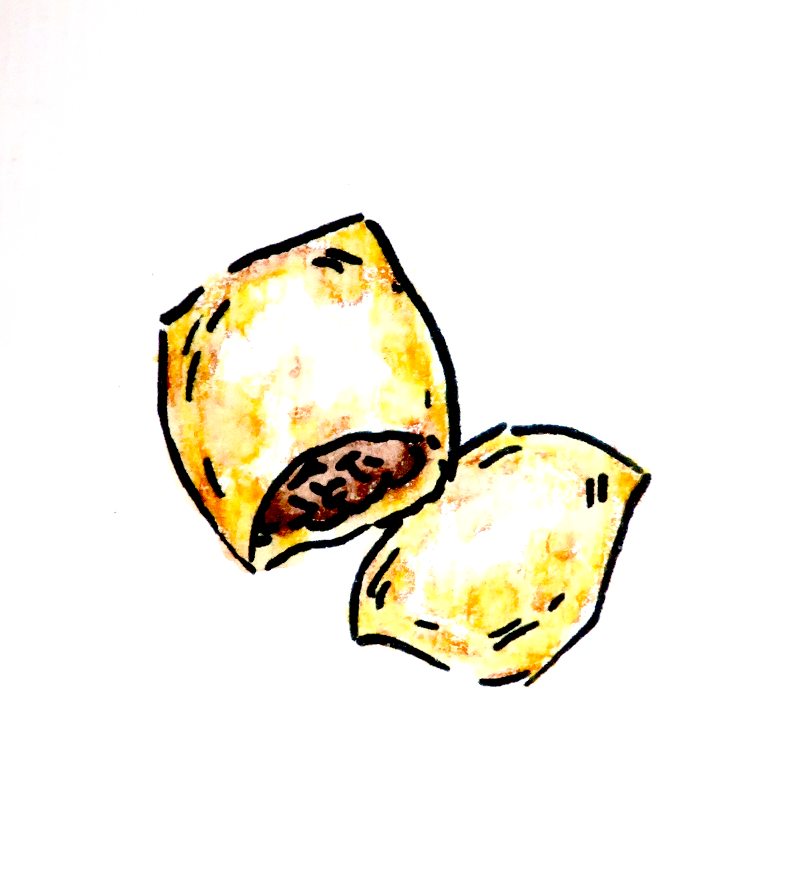
The name might sound strange, but a look at the humble samsa can bring back a string of foodie flashbacks: Iranian sambusa, Indian samosa, and Spanish empanada. In the autonomous region of Xinjiang, samsa is made by wrapping spiced mutton and onion in thin layers of dough, and baking it inside a tonur stove. A bite gives you the crusty skin, followed by the piping hot juicy interior.
Unlike some of its betterknown Silk Road cousins, the humble samsa has yet to claim the international spotlight. Curious Shanghai eaters can find it at the Friday Muslim Market with a generous serving of pollo (Uyghur pilaf with slowcooked mutton).
Find them at…
> Friday Muslim Market Aomen Lu, by Changshou Lu 澳门路, 近长寿路
> Xibo (锡伯新疆餐厅) 3/F, 83 Changshu Lu, by Julu Lu 常熟路83号神州商务大厦3楼, 近巨鹿路
Cantonese Dim Sum (Savory and Sweet Snacks)
Cuisine: Guangdong Province
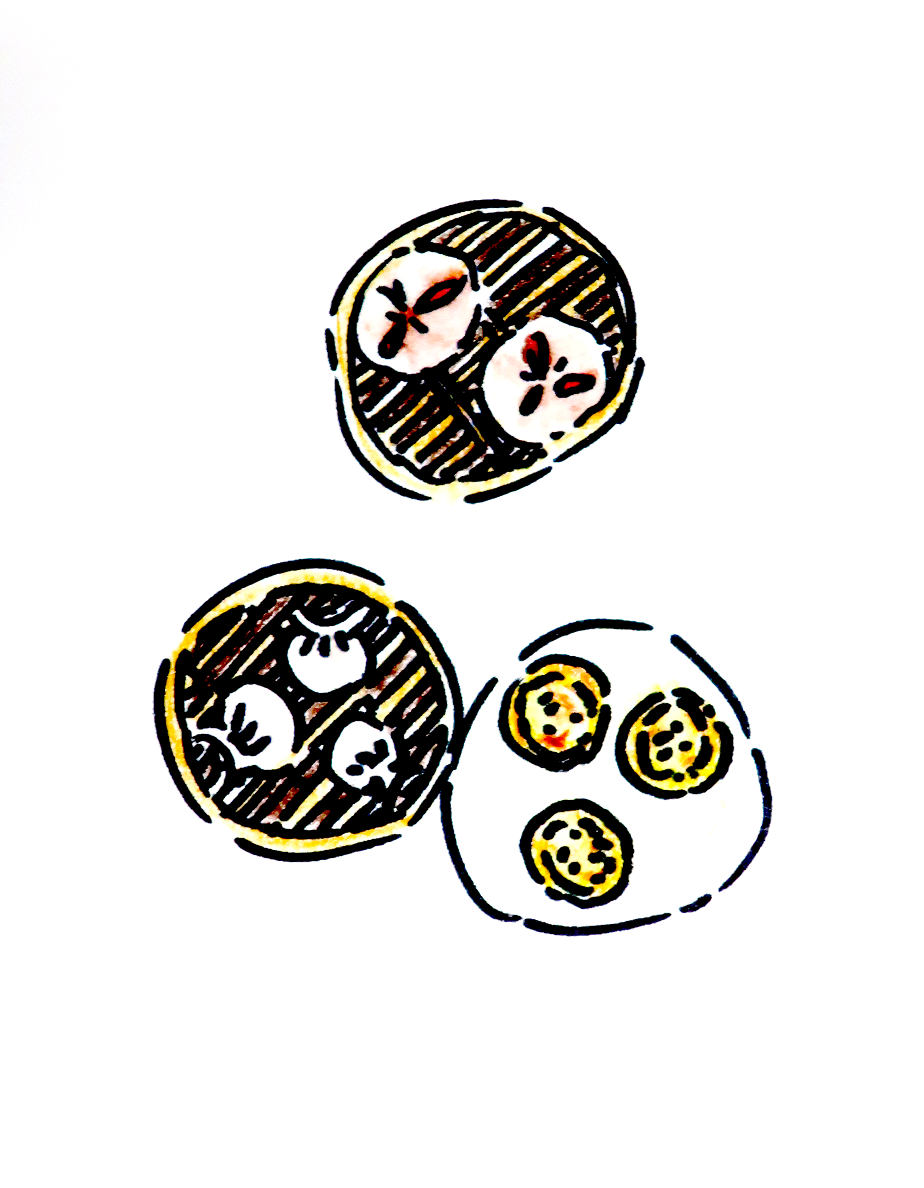
The expression 'dim sum' translates to 'touches the heart' and is widely employed to address delicate snacks throughout China. In the Cantonese-speaking region famed for its dim sum culture, a wholesome meal would encompass everything from surf to turf , savory to sweet. Mainstays like char siu bao (barbecue pork buns) and har gau (shrimp dumplings) are steamed and served first , followed by fried options like wu gok (fried taro cake) and spring rolls. You then finish with sweet buns, egg tarts or light puddings.
Pay homage to the tradition of dim sum dining and pair your meal with a warm pot of tea. Historians believe that tea houses on China's southeastern shores used to serve these bitesized items to famished merchants and seafarers, which gave name to the popular 'yum cha' customs and the modern idea of brunch.
Find them at…
> Canton Table 5/F, Three on the Bund, 3 Zhongshan Dong Yi Lu, by Guangdong Lu 中山东一路3号外滩三号5楼, 近广东路
> Loonfung House (香港龙凤楼) 75 Mengzi Lu, by Liyuan Lu 蒙自路75号, 近丽园路
Shaobing (Baked Flatbreads)
Cuisine: Northwestern provinces / Zhejiang Province
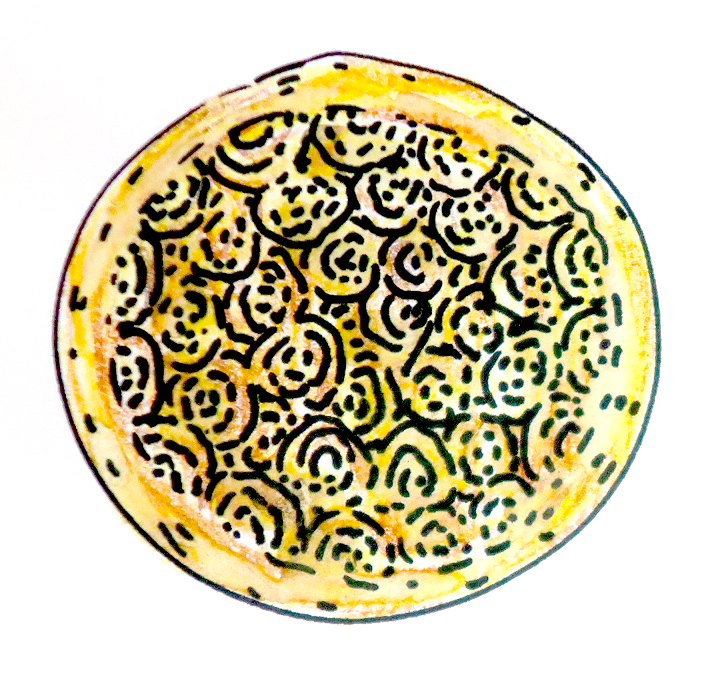
Many baked styles of bread in China fall under the term shaobing, but the truth is, they can be doughy or crunchy, with or without filling, depending on where you are. Its basic anatomy is a piece of leavened dough, rolled out, and showered with sesame seeds. The variety dominating Shanghai markets are filled with finely chopped dry mustard green leaves, salted egg yolk or red bean paste, which originated from the county of Jinyun outside of Hangzhou.
Shaobing's history traces back to the third century BC in central Asia. It is economical to make, takes three minutes to bake in a clay stove, and was favored by traveling troops and individuals alike. By the 14th century, shaobing had become so rooted in the Chinese psyche that poetry and ballads were composed to salute this humble bread. Having made its first European appearance in Italy last year, and with the first certified Jinyun Shaobing branch registered in the EU this March, its influence will likely stretch farther and wider in the years to come.
Find them at…
> Jinyun Shaobing (缙云烧饼) 311 Xiangyang Nan Lu, by Yongkang Lu 襄阳南路311号, 近永康路
> Youjuan Shaobing Multiple venues across town
Mijiu Baba (Cultured Rice Pancakes)
Cuisine: Hubei Province
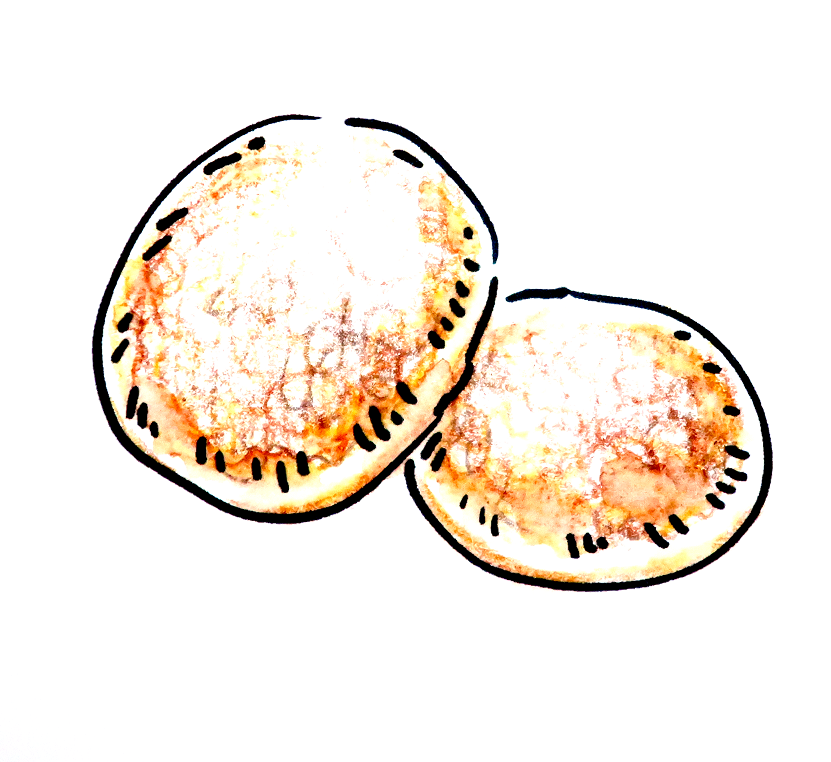
This entry is a tribute to my mom: cultured rice flour pancakes. Jiu niang (aka sweet rice wine) is used as the rising agent in the batter, which is spooned onto a preheated iron griddle with minimal application of oil. Scraping these off can be a chore, but when their tangy sweetness hit the taste buds, we know they are worth the trouble.
Rumor has it that these pancakes originated in the central Hubei province, an area which thrives on rice and freshwater produce. Some vendors prefer to use cultured rice for the batter, while others, including my mom, would opt for plain rice flour for a lighter texture.
Find them at...
> Dong Yuhang Lu Food Street 953 Dong Yuhang Lu, by Zhoushan Lu 东余杭路953 号, 近舟山路
Jianbing Guozi (Savory Crêpe Rolls)
Cuisine: Tianjin/Shandong Province
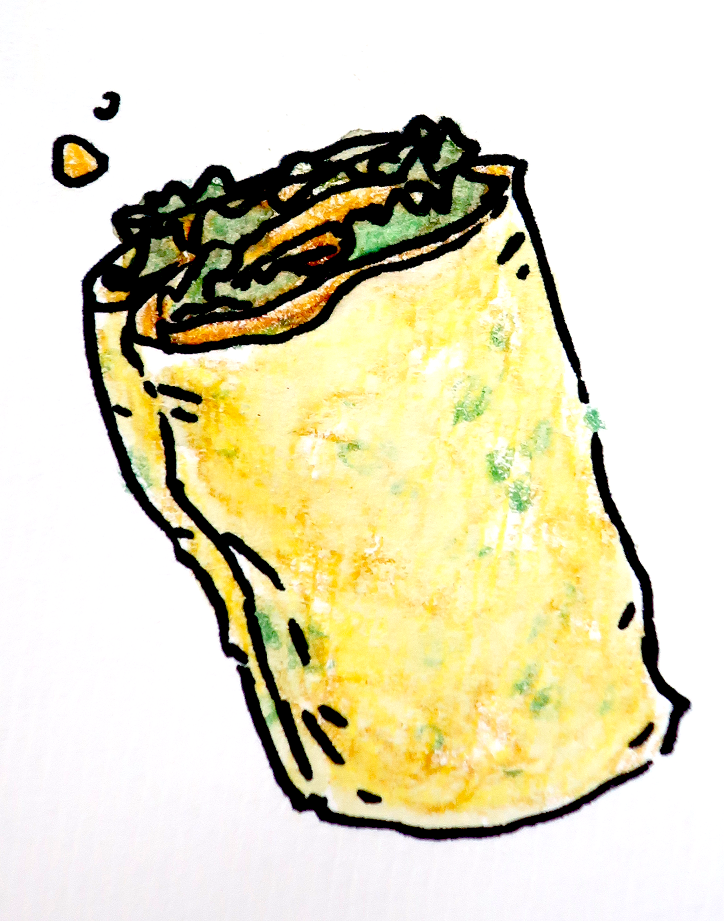
For some, the thought of jianbing guozi might be enough to roll out of bed in the morning, or pick up some Mandarin phrases. Its construction, however, is a symphonic assemblage of condiments. Spread a thin layer of wheat flour batter over a flat grill, crack an egg and add chopped coriander, pickles and a sheet of fried cracker, fold and slather the surface with soy and chili sauces. Fold again, cut in half, and it's ready.
As far as the Legends of the Three Kingdoms is concerned, jianbing was conceived when soldiers ran out of crockery and were forced to cook batter over their shields. These days, with budget value as low as RMB4 per bing, the only thing you have to sacrifice is time. A sufficient supply has not met its popular demand, and queueing is implied whenever you go on a jian bing guo zi hunt.
Find them at...
> Fatty Jianbing (胖子煎饼店) 261 Qinzhou Nan Lu, by Liuzhou Lu 钦州南路261号, 近柳州路
> He Tai Ji (何太吉) 169 Jianguo Zhong Lu, by Ruijin Er Lu 建国中路 169号, 近瑞金二路.
[Cover image via Pixabay; All illustrations by Mandy Tie/Urban Family Shanghai]

